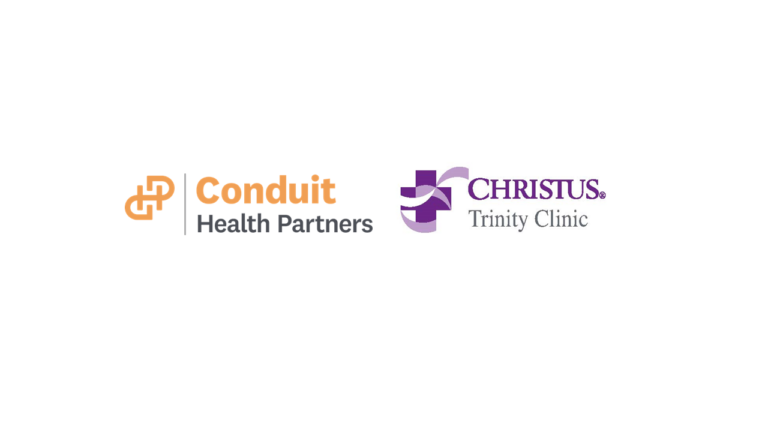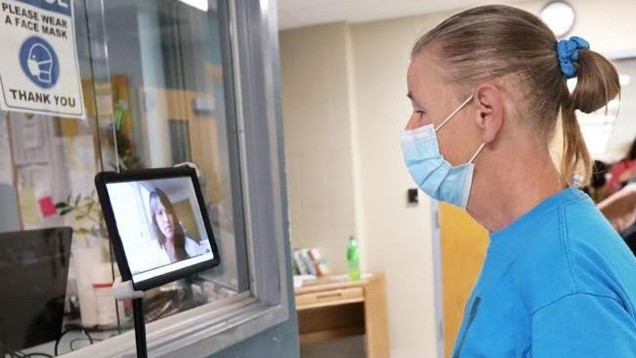
Recent News

Preventing Readmissions Starts Before Discharge: The Role of Nurse-First Triage
Hospital readmissions are a persistent challenge for health systems across the country. Nearly one in five Medicare patients is readmitted within 30 days of discharge,
5 Tips To Optimize Your Transfer Center
Optimizing your health care transfer center is a crucial step in enhancing patient flow, reducing wait times, and improving overall care coordination.

Behavioral Health Collaboration Reduces Emergency Department Length of Stay by 64%
Focus on timely transfer for acute behavioral health patients improves patient safety and outcomes
A recent collaboration between Conduit Health Partners and Mercy Health — Springfield Regional Medical Center has significantly streamlined care transfers of behavioral health patients from the emergency department (ED) to appropriate care settings.

Optimize Transfer Center Practices to Improve Patient Acquisition Whitepaper
Health care is changing. Fast. But one constant remains — the challenge of managing the flow of patients in and out of your hospital or health system.
Even before COVID-19, patient transfers were problematic for most hospitals and health systems. Then, the pandemic added more strain. Finding the best way to handle patient flow has become increasingly difficult, with higher patient volumes and staff shortages.

CHRISTUS Health and Conduit Health Partners Expand Access to Care
Collaboration with CHRISTUS Trinity Clinic brings after-hours nurse triage to CTC communities
CINCINNATI, Ohio and IRVING, TX (Oct. 9, 2023) — CHRISTUS Trinity Clinic, the medical provider group of CHRISTUS Health, is collaborating with Conduit Health Partners to bring after-hours telephonic nurse triage care to their patients through Conduit’s nurse-first model where callers have immediate,

How to Increase Health System Patient Retention with Patient Transfers
Patient transfers are a necessary function that can be inefficient and frustrating. Your transfer processes, both referring and receiving patients, can significantly impact your reputation. Efficient patient transfers may increase patient acquisition, as well as retention.

Conduit’s Kris LaHote rappels off a 16-story building to help others with cancer
When Kris LaHote, PMP, Manager of the Program Management Office for Conduit Health Partners, was diagnosed with breast cancer for the second time, she believed she could either say “Why me?” or seek something good that might come out of it.

Simplify Patient Transfers from Rural to Metro Hospitals
Events such as a pandemic, weather-related disaster or other mass health crisis can quickly overwhelm rural hospitals. The American Hospital Association reports that 46% of these facilities have 25 or fewer staffed beds. At any time, they may be at capacity or unable to offer the specialty care and trauma services a patient requires.

How Can Employers Reduce Health Care Costs?
Your employees can generate unnecessary costs to your business without even knowing it. The tradition of “heading to the emergency department” isn’t always the best choice, but people often don’t know where else to turn when they need medical assistance (or think they do). These ED visits are the costliest option for your employees and your company, and may be unnecessary.

5 Ways Virtual Care Can Reduce Health Disparities
Over the last two years, the U.S. healthcare system has worked around the clock to care for countless patients. The struggle has been intense, and hospitals and health systems nationwide have risen to the challenge.
Still, the heavy influx of patients resurfaced a long-standing problem. Healthcare disparities remain significant, drastically reducing access to quality care services for racial, ethnic and cultural minority groups.

9 Benefits of Remote Patient Monitoring
The COVID-19 pandemic has forever changed health care delivery in the United States — and in some unexpected ways.

Conduit President Cheryl Dalton-Norman wins Health Entrepreneur Award
Conduit Health Partners is proud to announce that our President, Cheryl Dalton-Norman, won Cincinnati Business Courier‘s 2022 Health Entrepreneur award!
In regard to the achievement, Cheryl Dalton-Norman had this to say: “I am humbled and honored to be counted among those recognized by the Cincinnati Business Courier.

Benefits of Partnering with a Nurse-First Triage Organization
Mark*, a 27-year-old male, is covering third base in the company softball game on a Friday evening when Sarah from accounting attempts to steal from second. She slides into Mark, jamming his left ankle. Mark tries to walk it off, but the pain and swelling quickly worsen. Unsure about the level of care he needs,

Conduit Health Partners Featured on Becker’s Hospital Review
Recently, Becker’s Hospital Review touched upon the pain point of health care access and patient transfers. Calling for a new approach to patient transfer, Becker’s Hospital Review recently posted an article about how industry leaders, including Conduit, had a discussion about how healthcare organizations can optimize transfer services with a data-driven approach and technology to retain patients and inspire growth.

Strategies to Reduce Unnecessary Emergency Room Visits
Unnecessary ER visits cost the healthcare industry at least $47 billion per year, according to a report from Accenture consulting firm (2021). The report cites patients with “low health system literacy” as one key cause of excessive ER visits. The complexity of today’s health system drives patients to the ER for acute needs that could be addressed in less expensive health settings, according to the report.
In addition to their negative impact to a hospital’s bottom line, excessive ER visits also put additional strain on clinical and support staff, while diverting valuable resources from patients experiencing serious health crises which truly require emergency care.

Remote Patient Monitoring Programs Aim to Reduce Readmission Rates
Spurred by the COVID-19 crisis, nursing shortages and the incentive to avoid penalties, the industry became more innovative. Remote Patient Monitoring (RPM) programs pair wearable devices with telehealth response capability. These programs provide frequent patient monitoring without requiring in-person visits and tests – a capability that is especially important for those who live in remote areas, those with chronic conditions and those transitioning from hospital to home. Medical professionals can evaluate daily reports and reach out to those patients with immediate issues.

Using Data to Drive Patient Acquisition, Retention and Growth
An innovator in the health care space, Conduit Health Partners’ use of data is a driving factor in helping to determine the correct type of care each patient should receive, when they should receive it, if that care is best delivered in the hospital or at home, and how that care will impact the bottom line for both the health care services provider and the patient.

Access Center a Key Tool in COVID-19 Response
Through the Health Collaborative, Cincinnati-area health care systems collaborated closely and tirelessly to coordinate a COVID-19 response. The goal was to ensure their ability to deliver the best possible evidence-based care for area residents.

How Conduit Health Partners Has Distinctly Positioned Themselves, Pivoted Quickly During a Pandemic and Responded to Health System Needs for their Communities
Cheryl Dalton-Norman shared insights into how health systems could better anticipate patient flow and support front-line providers amid the COVID-19 crisis.

Conduit Health Partners Brings Professionally Staffed Nursing Telehealth to the Homeless and Underserved
Conduit Health Partners has partnered with Nurse Disrupted to install kiosks inside homeless shelters providing a virtual, nurse-first telehealth solution for individuals in need. While Nurse Disrupted delivers the technology, Conduit Health Partners has provided experienced professional nurses to support this endeavor.

Conduit Health Partners and Palomar Health Bring Nurse Triage Service to North San Diego County
Palomar Health is launching a 24/7 nurse triage service for people in North San Diego County, through a collaboration with Conduit Health Partners. This expansion of access to quality health care will begin on October 1, 2022 and will include employees of Palomar Health and connect the community to experienced registered nurses to listen to every caller’s needs and offer care advice.

Conduit Addresses the Nursing Shortage
The Great Resignation has led to millions of Americans re-evaluating their jobs and trying to find what they want in life. Nurses are at the top of this list. Nursing turnover has never been higher. Engagement and retention for nurses are incredibly important. Leaders at Conduit are actively creating solutions to increase the sense of belonging and job satisfaction that are the building blocks of keeping valuable and talented nurses on our teams.

Conduit Health Partners and Nurse Disrupted Partner to Expand Services to Homeless and Other Underserved Populations
We are excited to partner with Nurse Disrupted to offer our 24/7 Nurse-First Triage solution. Recently, Nurse Disrupted wanted to expand their nursing services to homeless shelters to help address the needs of underserved populations. To help them achieve their goal, they brought in Conduit Health Partners.

Meet Colleen Williams, Manager of Triage, Conduit Health Partners
To celebrate Women’s History Month, Conduit Health Partners is excited to feature Colleen Williams, Clinical Nurse Manager.

Cheryl Dalton-Norman named Health Care Heroes Award Finalist
We are proud to announce that Cheryl Dalton-Norman, President Conduit Health Partners, is a finalist for the Cincinnati Business Courier’s Health Care Hero Award in the Health Entrepreneur category. This recognition honors individuals who have improved the quality of health care in Greater Cincinnati through their expertise, research and innovation, management skills, entrepreneurial efforts, community work, and patient care.